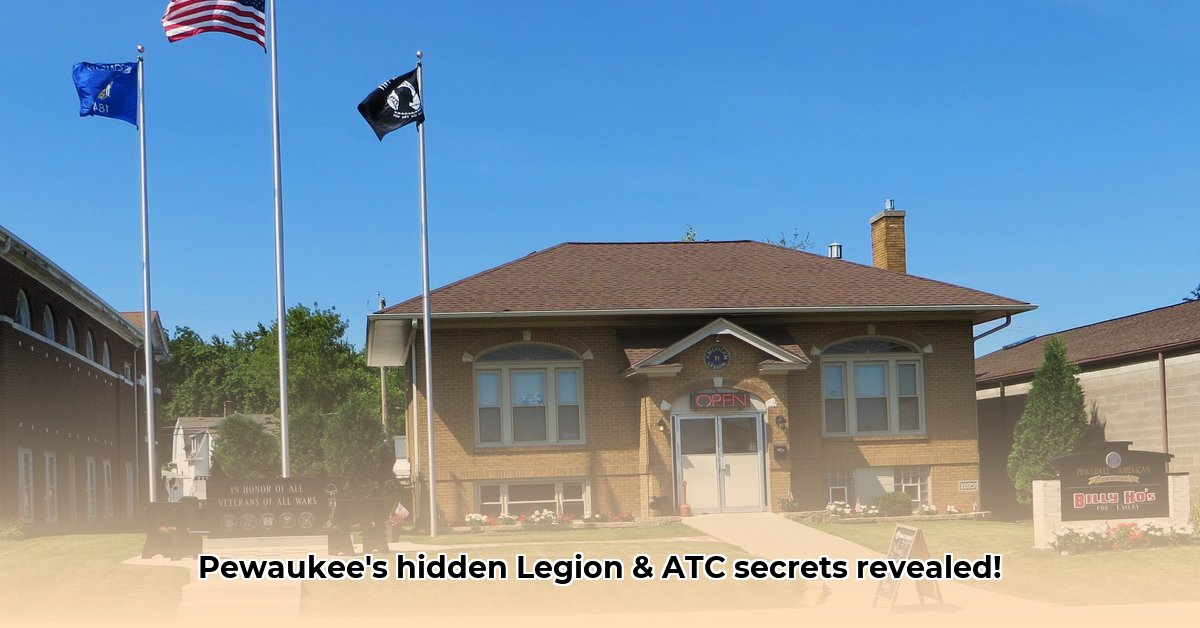
American Legion Post 71 and ATC LLC: A Comparative Analysis
Pewaukee, Wisconsin, thrives due to a blend of localized community support and robust regional infrastructure. This article examines two organizations embodying this duality: the American Legion Post 71 and ATC LLC. One deeply engages the local community; the other powers a vast energy network. Their contrasting approaches reveal the diverse ways a town fosters well-being.
American Legion Post 71: A Community Anchor
American Legion Post 71 serves as a vital hub for Pewaukee veterans. More than a building, it's a space fostering camaraderie, shared experiences, and crucial support services. These services range from social gatherings and recreational activities to assistance with navigating veteran benefits. Funding comes primarily from membership fees and community fundraising – a direct reflection of Pewaukee's support. Maintaining the aging building and engaging younger veterans pose ongoing challenges. However, the Post's unwavering commitment underscores the profound impact of local community spirit. How can a small town best support its veterans? The Legion's enduring presence provides a powerful answer.
ATC LLC: Powering Progress Across the Region
In stark contrast, ATC LLC operates on a far larger scale, managing regional energy infrastructure. While less visible in daily life than the Legion, their impact is profound. ATC ensures reliable power delivery, investing heavily in grid modernization and sustainable technologies. This commitment extends to STEM education, cultivating a skilled workforce for future energy needs. Their influence reaches beyond Pewaukee, impacting countless homes and businesses. They represent the essential infrastructure underpinning regional progress. What is the most effective way to ensure reliable energy for a growing region? ATC's dedication to infrastructure modernization provides a compelling response.
Comparing Contributions: Local Focus vs. Regional Impact
The differences between the Legion and ATC are striking. The Legion delivers immediate, personal support to a specific community; its impact is intensely localized. ATC's contribution is more widespread and indirect; their work underpins the functioning of essential services across a much larger area. One provides direct, tangible support; the other works quietly behind the scenes, ensuring the functioning of entire systems. Both are crucial, demonstrating the diversity of contributions needed for a healthy community. How do seemingly disparate organizations both contribute to community well-being? The answer lies in their distinct yet equally valuable roles.
A Closer Look at Organizational Structure and Finances
The following table highlights key differences:
| Feature | American Legion Post 71 | ATC LLC |
|---|---|---|
| Primary Mission | Veteran support and community engagement | Regional energy infrastructure & sustainable innovation |
| Geographic Impact | Primarily Pewaukee | Regional, impacting a wider area |
| Funding Sources | Membership dues, fundraising, potential grants | Revenue from energy services, investments |
| Key Challenges | Maintaining facilities, attracting younger members, securing funding | Adapting to evolving energy needs, regulatory compliance |
| Community Interaction | Direct, highly visible | Indirect, but essential to daily life |
The Future: Continued Relevance and Adaptability
Both organizations face ongoing challenges and opportunities. The Legion's future depends on attracting younger members and ensuring sustainable funding. ATC must adapt to evolving energy demands and regulatory landscapes. Their continued success underscores the importance of adaptability and community engagement, regardless of scale. How can these organizations ensure long-term viability and continued contributions? By embracing innovation, securing funding, and maintaining community engagement, both can continue to thrive.
Conclusion: A Tapestry of Contributions
Pewaukee's story illustrates the multifaceted nature of community well-being. The American Legion Post 71 and ATC LLC, despite their vastly different approaches, both contribute significantly. Their coexistence highlights the importance of both intimate community support and robust regional infrastructure. Together, they demonstrate the rich tapestry of contributions required to build a truly thriving community.